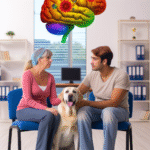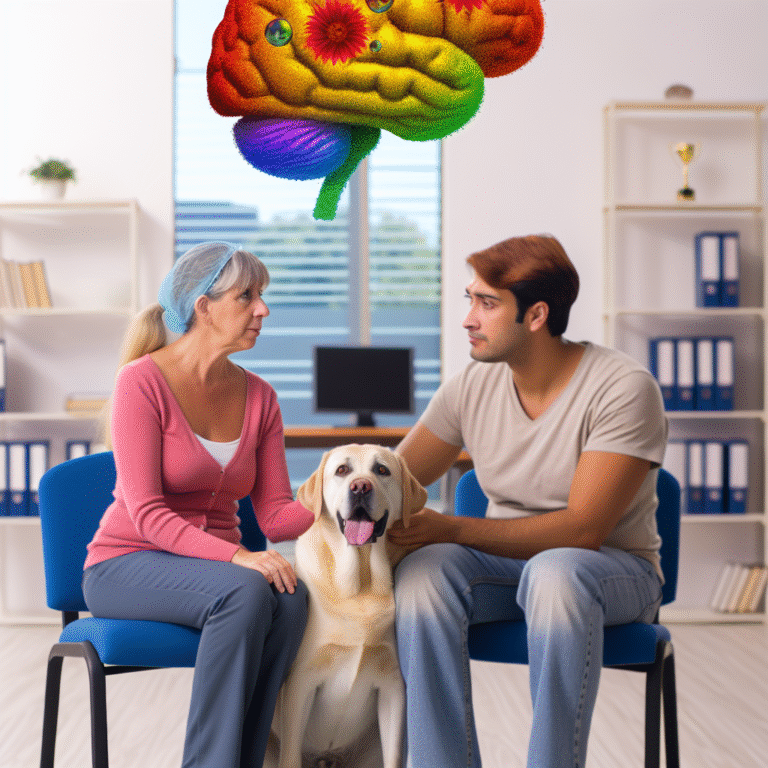
Barking Up the Right Tree: Why Therapy Animals Are Essential for Mental Health Treatment
Introduction
Imagine walking into a clinical setting, filled with the sterile smell of antiseptics and the faint hum of fluorescent lighting. Now picture a friendly dog trotting alongside a therapist, tail wagging and eyes full of warmth. This scene highlights an essential shift in mental health treatment: the inclusion of therapy animals. "Barking Up the Right Tree: Why Therapy Animals Are Essential for Mental Health Treatment" resonates not just as a catchy phrase but as a profound reality in today’s therapeutic landscape.
In recent years, mental health specialists have increasingly recognized the importance of therapy animals, particularly dogs, in supporting emotional well-being. As more research validates their effectiveness, we’re left to ponder: Why are therapy animals so essential for mental health treatment? The answer goes beyond mere companionship; it delves into the physiological, psychological, and emotional benefits that these animals bring. This article will explore the myriad ways therapy animals can enhance mental health care, enriched by case studies, expert insights, and actionable takeaways.
The Science of Comfort: How Therapy Animals Impact Mental Health
Emotional Benefits
The presence of a therapy animal can significantly reduce feelings of anxiety, depression, and loneliness. Numerous studies have indicated that interactions with therapy animals can lead to increased production of oxytocin, a hormone that promotes feelings of happiness and bonding.
Case Study 1: The Human-Animal Bond in Action
One notable study conducted at a Chicago mental health facility involved patients with severe anxiety disorders. Over six months, the patients engaged in weekly sessions with therapy dogs. Researchers reported a 60% decrease in their anxiety levels, illustrating that the emotional support provided by these animals was not just a placebo effect but a demonstrable difference in their mental health.
Physiological Impact
Therapy animals don’t just provide emotional relief; their presence also affects physiology. Studies have shown that petting a dog can lower cortisol levels, the stress hormone, while simultaneously increasing serotonin and dopamine, neurotransmitters associated with well-being.
Table 1: Physiological Effects of Interacting with Therapy Animals
| Interaction Type | Cortisol Levels | Serotonin Levels | Dopamine Levels |
|---|---|---|---|
| Before Animal | High | Low | Low |
| After 10 Minutes | Decreased | Increased | Increased |
This table summarizes the physiological changes that occur during interactions with therapy animals, reinforcing the notion that they’re critical for mental health treatment.
The Role of Therapy Animals in Special Populations
Children and Adolescents
Therapy animals have shown remarkable benefits in pediatric mental health settings. Their presence creates a non-threatening environment that eases communication and encourages expression among children who may otherwise be reluctant to share their feelings.
Case Study 2: Fostering Communication in Children
At a pediatric hospital in New York City, therapy animals were introduced into the treatment plans for children with PTSD stemming from traumatic events. The kids reported feeling more comfortable discussing their feelings in the presence of the animals, citing them as "listening friends." This backdrop illustrates how therapy animals create a safe space for vulnerable populations.
Elderly and Assisted Living
Focusing on senior populations, therapy animals often play a crucial role in hospice care. Research shows that pets can reduce feelings of isolation, alleviate pain perception, and even enhance cognitive functions in elderly patients.
Case Study 3: Improving Quality of Life in Hospice Care
A hospice center in Florida integrated therapy dogs into their end-of-life care program. Families reported increased moments of joy and connection, with many patients expressing a notable improvement in mood during visits. Therapy dogs facilitated interactions among family members, making the difficult experience more bearable.
Enhancing Therapeutic Techniques with Therapy Animals
Motivating Patients in Therapy
Incorporating therapy animals into traditional therapeutic practices can lead to increased engagement. When patients have a dog to interact with, they often feel more motivated to participate in therapeutic exercises and discussions.
Case Study 4: Increasing Engagement in Therapy Sessions
In a community health center, therapists introduced a therapy dog into group therapy sessions. They observed a significant increase in participation from less vocal individuals, who began to interact both with the dog and their peers. This case exemplifies how animals can break the ice, encouraging dialogue and connection.
Bridging the Gap Between Patient and Therapist
Therapy animals can serve as a bridge between patients and therapists, fostering trust and openness. Patients may find it easier to discuss feelings and thoughts in the presence of a non-judgmental animal.
Case Study 5: Building Trust in Therapy
At a youth center, therapists reported a marked improvement in building rapport with adolescents when therapy dogs were present in sessions. Many teenagers admitted that they felt safer sharing their struggles while petting or playing with the dogs, which subsequently led to deeper discussions. This case starkly illustrates the role of therapy animals as catalysts for effective therapy.
The Legal and Ethical Landscape
Regulations Surrounding Therapy Animals
With the increasing popularity of therapy animals, understanding the legal framework is essential. In the U.S., therapy animals are generally not covered under the same regulations as service animals. They require specific training and certification, typically overseen by organizations like Pet Partners or Therapy Dogs International.
Ethical Considerations
There are ethical discussions surrounding the use of therapy animals in clinical settings. Continual assessment is crucial to ensure animal well-being and client compatibility. Additionally, therapy animals should be well-trained to manage different emotional states and stressors within therapeutic environments successfully.
Training Therapy Animals
What Makes a Good Therapy Animal?
Not all pets are suited for therapy work. Ideal therapy animals should be calm, well-socialized, and adaptable. They often undergo specialized training to learn how to handle various environments and interact positively with different clientele.
Table 2: Qualities of Effective Therapy Animals
| Trait | Description |
|---|---|
| Temperament | Calm and relaxed under stress |
| Sociability | Enjoys interacting with people |
| Trainability | Quick to learn and respond to commands |
| Reliability | Consistently behaves well in all situations |
Future Directions in Therapy Animal Programs
Expanding the Scope
As we delve deeper into the potential of therapy animals, various opportunities arise to expand their role within mental health treatment. The integration of therapy animals into schools, corporate workplaces, and even virtual therapy sessions can be visionary.
Case Study 6: Beyond Traditional Settings
An innovative program at a tech company in Silicon Valley introduced therapy cats during stressful product development cycles. Employees reported increased satisfaction, decreased anxiety levels, and heightened productivity—underlining that therapy animals can be beneficial even in unconventional settings.
Researching Efficacy and Techniques
Further research is crucial to validate and refine therapy animal programs. More longitudinal studies can strengthen the case for integrating therapy animals into diverse therapy models—solidifying their role as essential tools in mental health treatment.
Conclusion
As we continue to explore the multifaceted impacts of therapy animals, it’s clear that we are indeed "Barking Up the Right Tree: Why Therapy Animals Are Essential for Mental Health Treatment." They bridge gaps, improve emotional and physiological states, and foster deeper connections in therapeutic settings. With ongoing research and a commitment to ethical practices, therapy animals are poised to play an even more significant role in shaping the future of mental health care.
Whether you are a mental health professional, a caregiver, or simply someone curious about new horizons in mental well-being, embracing therapy animals as vital contributors to mental health treatment can inspire action and ignite change. So, let’s advocate for these furry healers and ensure they find their rightful place in our therapeutic practices.
FAQs
1. How are therapy animals different from service animals?
Therapy animals provide emotional support to multiple individuals in various settings, while service animals are specifically trained to assist people with disabilities.
2. What types of animals can be therapy animals?
While dogs are the most common therapy animals, cats, rabbits, and even miniature horses can also serve as therapy animals, depending on their training and temperament.
3. Are there any risks involved with therapy animals in therapy settings?
While therapy animals provide many benefits, professionals must ensure the animal is well-trained and comfortable in various situations to avoid stress for both the animal and the clients.
4. How can I find a certified therapy animal for my practice?
Seek organizations such as Therapy Dogs International or Pet Partners, which offer certification and resources for therapy animal programs.
5. Can therapy animals be used in virtual therapy sessions?
Yes, the presence of therapy animals has been found to improve emotional well-being even during virtual interactions, offering comfort and support.
By understanding more about therapy animals and their essential role, we can fully appreciate their contributions to mental health treatment. These remarkable creatures remind us of the continuing evolution of therapy and our constant strive for improvement and healing.













